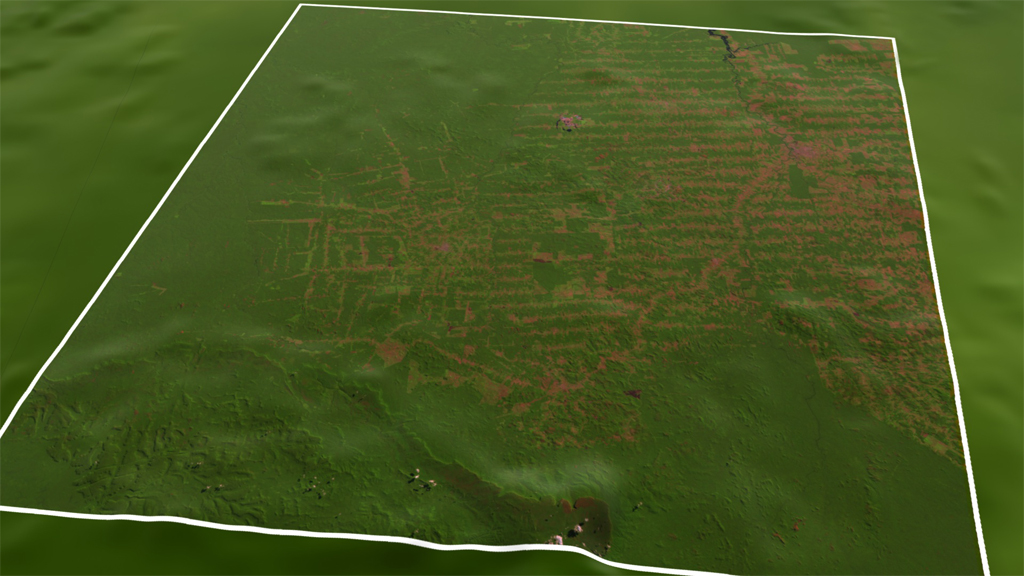Deforestation in Rondonia, Brazil
In this animation of images from 1975 until 2012, acquired by the Landsat 5 and 7 satellites, enormous tracts of Amazonian forest disappear in Rondonia, a state in Western Brazil.
Deforestation in Rondonia in the 1970s until the 1990s had a distinctive "fishbone" pattern. Access to this remote region began with a major road cutting through the dense tropical forest, opening up new territory for small farms and ranches. Then, other roads developed at right angles to the initial road. In this visualization, these roads shoot off a stretch of the main "backbone" road for about 31 miles (~50 kilometers) long, each secondary road branching off about every 2.5 (~4 kilometers). This creates the "fishbone" pattern.
Even with the deforestation, Brazil is still home to more than a quarter of Earth's tropical forests. In addition to their astounding biodiversity, these forests act as a major carbon "sink." These are places where carbon dioxide in the atmosphere is absorbed by living things, like trees and plants, and thus the carbon is said to be trapped or sequestered. With increasing carbon dioxide levels around the world, the ability of these forests to hold onto carbon has beneficial implications for stabilizing the world's climate.
NASA and the U.S. Department of the Interior through the U.S. Geological Survey (USGS) jointly manage Landsat, and the USGS preserves a 40-year archive of Landsat images that is freely available over the Internet. The next Landsat satellite, now known as the Landsat Data Continuity Mission (LDCM) and later to be called Landsat 8, is scheduled for launch in 2013.
Rondonia deforestation with dates
Credits
Please give credit for this item to:
NASA/Goddard Space Flight Center Scientific Visualization Studio
-
Animators
- Trent L. Schindler (USRA)
- Alex Kekesi (Global Science and Technology, Inc.)
- Horace Mitchell (NASA/GSFC)
-
Producer
- Matthew R. Radcliff (USRA)
-
Writer
- Aries Keck (ADNET Systems, Inc.)
Release date
This page was originally published on Monday, July 23, 2012.
This page was last updated on Wednesday, October 9, 2024 at 12:02 AM EDT.
Datasets used
-
[Landsat]
ID: 47 -
Blue Marble Land Cover [Terra and Aqua: MODIS]
ID: 510Credit: The Blue Marble data is courtesy of Reto Stockli (NASA/GSFC).
See all pages that use this dataset
Note: While we identify the data sets used on this page, we do not store any further details, nor the data sets themselves on our site.
